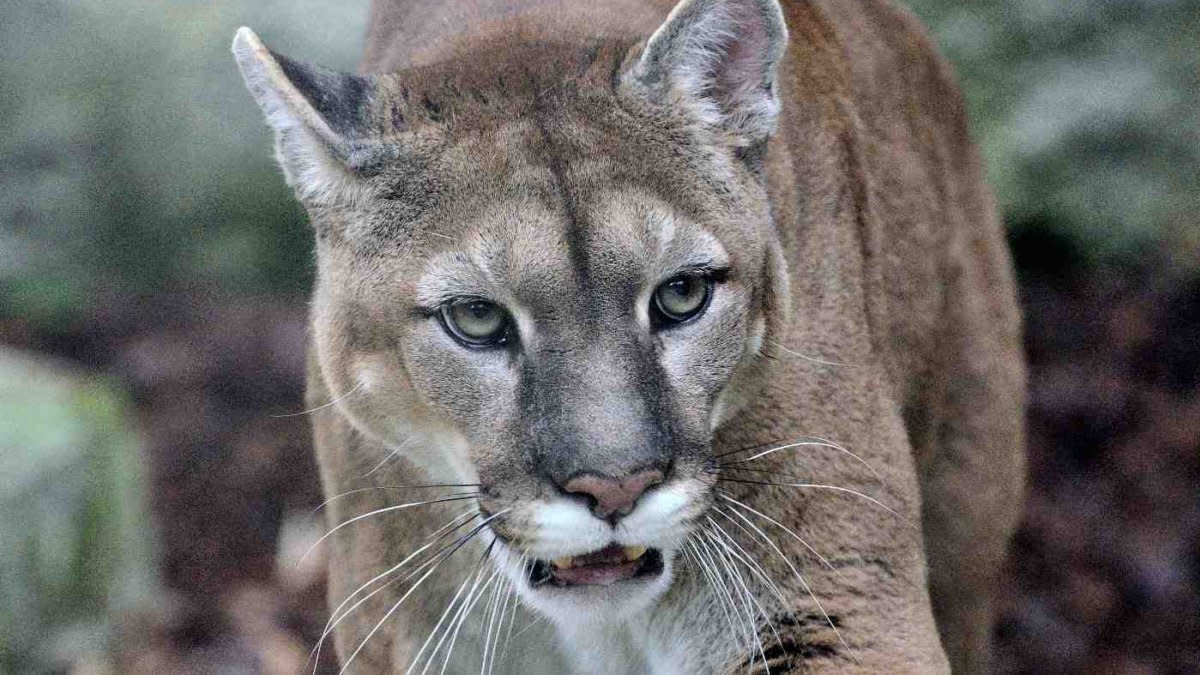
Cougars are the most widely distributed large predator in the Western Hemisphere. Known in various regions as the mountain lion, panther, puma, painter and catamount, cougars range from northern British Columbia through Latin America to the Patagonia region of southern Chile and Argentina. Cougars thrive in deserts, jungles, mountains, forests and broken plains environments. In what is now the Lower 48, they were found from coast to coast at the time of European contact.
Times have changed. Wildlife managers tasked with protecting domestic livestock and recovering depleted stocks of game animals treated predators much differently a century ago than they do today. At the same time grizzly bears and wolves were being eliminated from much of their original range in the United States, cougars suffered the same fate, particularly in the eastern half of the country. However, regional extirpation wasn’t the end of the story for grizzlies and wolves, and there are those who are questioning whether official extinction is an opportunity in disguise for eastern cougars.
By the early 1900s, cougars were absent from the East Coast west to Missouri and Illinois, and north to Michigan. The last breeding population of cougars in the northeastern United States lived in Maine. Those cougars were gone by the 1930s, but it was only after many decades of absence from the landscape that the United States Fish and Wildlife Service declared the eastern cougar extinct.
The USFWS made it official last year by removing eastern cougars from the endangered species list. This classification is a key point for those who support future efforts to re-establish extinct populations of cougars in the Eastern United States.
Unlike eastern cougars, Florida panthers dodged extinction, but it was a close call. A small, isolated population of Florida panthers came very close to dying out in the 1970s, when only 20 individuals remained in the wild. Federal protections granted by the Endangered Species Act and introductions of genetically similar lions from Texas have contributed to ongoing recovery efforts. Florida’s current panther population now includes well over 200 individuals.
Elsewhere, even where hunting is allowed, mountain lions are doing just fine. In the West, the number of lions is stable and even growing in places where adequate habitat and prey exist. Nearly 40,000 mountain lions live throughout the desert Southwest, Rocky Mountains and along the West Coast.
A separate population of cougars in South Dakota’s Black Hills region is rapidly growing and expanding their territory. These cougars seem to be prone to exploring new areas far from their home range.
In 2008, a wandering mountain lion was shot by a police officer in Chicago. Three years later, another was struck and killed by a vehicle in Millford, Conn., just outside New York City. In 2014, a deer hunter in Arkansas shot a Black Hills mountain lion.
Even if you’re not convinced by the deluge of trail camera photos of cougars popping from Nebraska to Michigan to Missouri, DNA testing proves Black Hills lions are regularly popping up in places where cougars have been extinct for many years. Some wildlife scientists believe these cougars will continue to expand into unoccupied territory and reclaim appropriate habitat throughout the Midwest.
It makes sense. In the West, mountain lions are largely their own limiting factor because they have to compete with one another for territory. If populations are at or near carrying capacity, young lions have a hard time carving out their own home range where unoccupied territory is in short supply. The Black Hills lions, on the other hand, are surrounded by unoccupied territory.
Throughout North and South America, existing cougar populations live in vastly different ecosystems hundreds of miles apart. Wildlife biologists have identified over 30 cougar subspecies. When Texas mountain lions were introduced into the endangered population of Florida panthers, some biologists felt it signaled the “genetic extinction” of that distinct population segment.
Taxonomical “splitters,” who support dividing one species into many distinct subspecies based on slight genetic variations and regional separation, fall into that camp. “Lumpers” believe geographic locations and minutely different hereditary traits don’t warrant creating a multitude of unnecessary subspecies classifications. To lumpers, a cougar is a cougar no matter where it lives. Many wildlife scientists are now of the opinion that eastern cougars, Florida panthers and western mountain lions are not separate subspecies.
Either way, the result is that Florida now has a viable population of panthers that were once on the brink of disappearing forever. Without introductions of Texas lions, Florida’s panthers would likely be extinct just like eastern cougars.
Although eastern cougars have been declared extinct, the overall status of the entire species comes down to semantics and location. It’s true there hasn’t been a breeding population of cougars in the Northeast for almost a century, but as a species, cougars aren’t anywhere near going extinct.
The removal of the eastern cougar from the federal endangered species list, however, opens up an extremely controversial possibility. In theory, western cougars from California or Colorado could be introduced into places in the Eastern United States like the Adirondack or Great Smoky mountains.
Because extinct eastern cougars (not including the Florida Panther DPS) are no longer considered endangered, the USFWS said, “The introduction of cougars would fall under the jurisdiction of the states.”
It’s possible that experimental introductions of cougars could happen and, even more importantly, individual Eastern states now have the authority to manage any introductions or future cougar populations.
Ironically, this is one example where organizations that normally fight to maintain federal protections are in favor of state wildlife management authority.
In an interview with National Geographic, Mark Elbroch from the wild cat conservation group Panthera said, “It removes all those loopholes and complications of introducing a species where they’re listed as endangered. This will allow states to be in control of that process.”
There are others who support reintroductions for practical reasons. A study written by several university biologists and ecologists and published in the Journal of Conservation Letters suggests cougar reintroductions could save money and benefit human safety.
The study’s abstract states, “Cougars could reduce overabundant deer densities and deer-vehicle collisions by 22 percent in the Eastern United States, preventing 21,400 human injuries, 155 fatalities, and $2.13 billion in avoided costs within 30 years of establishment.”
Unless you’ve been living under a rock for the past 20 years, you’re probably familiar with the heated and continuous debate surrounding reintroductions of gray wolves into the Greater Yellowstone Ecosystem. The debate over cougar reintroductions would likely be just as volatile.
Whether reintroductions could ultimately happen depends on a variety of factors. First, state wildlife managers will have to determine where appropriate habitat might exist. Unlike the West, large swaths of undeveloped wildlife habitat are in much shorter supply in the East.
However, the United States Fish and Wildlife Service believes there are places where eastern cougars could make a living. The agency’s Northeast Region website says, “There are likely many places in eastern North America with adequate habitat to support populations of cougars.”
Even where good habitat exists, introducing a large predator near areas with high human populations comes with its own set of problems. Individual cougars, especially males, have relatively large home ranges. High deer densities in the East might help offset this requirement in some places but, as populations grow, more and more cougars will be forced to find territory closer to humans. Wherever cougars live in close proximity to people in Western states, conflicts are on the rise. Wildlife managers are regularly forced to kill cougars that prey on livestock or pets, or wander into areas where human safety may be at risk.
Aside from any perceived safety hazards, it is also the important to consider human tolerance and public opinion. Wildlife managers are required to factor how the general public feels about major policy decisions. Cutting loose cougars where they’ve been absent for over a century certainly falls into that category. In order for reintroductions to proceed, a public comment period would have to demonstrate widespread support for the presence of cougars on the landscape.
Will Eastern deer hunters be willing to compete with cougars? Some Western hunters feel wolf reintroductions have been a disaster for some elk herds. It is doubtful the majority of North Carolina or New York deer hunters would wholeheartedly embrace the introduction of cougars.
For now, state fish and game agencies have no immediate plans to reintroduce cougars in the Northeast.
Despite evidence the Adirondack Mountains could support some cougars, New York’s Department of Conservation told the Adirondack Explorer, “DEC has no plans to restore the cougar to New York. Cougars are a large predator requiring ample prey and large areas to live in. While the Adirondacks may be marginally large, deer numbers are not and the animals would likely wander into populated areas for food sources. Deer populations would be more suitable in other parts of the state, but those areas are in close proximity to human populations, and cougars could not be tolerated.”
That doesn’t rule out the possibility cougars won’t re-establish themselves without reintroductions. Some might argue that if western cougars are making their way east on their own, why not let nature take its course instead of intervening to speed things up unnaturally? It’s a fair argument, and one I’ve used myself in the case against reintroducing wolves in Colorado.
Whether by reintroductions or natural dispersal, our ecosystems should include large predators where appropriate habitat and public support exists, especially in places where humans previously eliminated them. It’s been proven that gray wolves can be successfully managed by state fish and game agencies in the West and the eventual state management of grizzlies is still a possibility.
Still, the fact of the matter is that no one can accurately predict what will happen if cougars are reintroduced into Eastern states. They’re a very adaptable predator that could have major consequences for humans and wildlife.
In his book Path of the Puma, author Jim Williams writes, “The trajectory—despite the recent success and expansion of Puma concolor—is toward more people and less wild nature. Predators will continue to prey on livestock. Ungulates will continue to compete for grass. Mountain lions will continue to prey on pets. Subdivisions will continue to consume habitat. Hunters will continue to compete with carnivores. Game managers will continue to be pressured by hunters.”
If we do decide eastern cougars deserve another chance, they could adjust with ease to their new surroundings, right alongside us. The big question is whether we would adjust to them.





Conversation